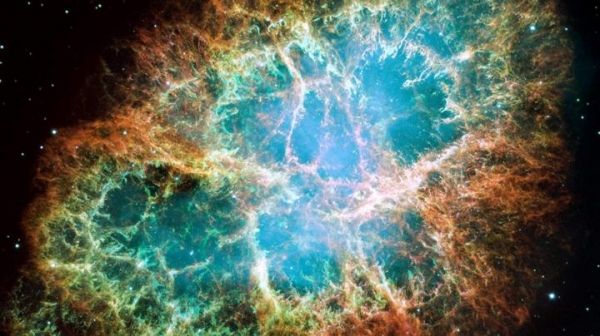Columbia researchers suggest radiation that lights the densest objects in our universe is powered by the interplay of turbulence and reconnection of super-strong magnetic fields.
For decades, scientists have speculated about the origin of the electromagnetic radiation emitted from celestial regions that host black holes and neutron stars—the most mysterious objects in the universe.
Astrophysicists believe that this high-energy radiation, which makes neutron stars and black holes shine bright, is generated by electrons that move at nearly the speed of light, but the process that accelerates these particles has remained a mystery.
Now, researchers at Columbia University have presented a new explanation for the physics underlying the acceleration of these energetic particles.
Read more at: Columbia University
The rapidly spinning neutron star embedded in the center of the Crab nebula is the dynamo powering the nebula's eerie interior bluish glow. The blue light comes from electrons whirling at nearly the speed of light around magnetic field lines from the neutron star. The neutron star, the crushed ultra-dense core of the exploded star, like a lighthouse, ejects twin beams of radiation that appear to pulse 30 times a second. (Photo Credit: NASA, ESA, J. Hester (Arizona State University)


